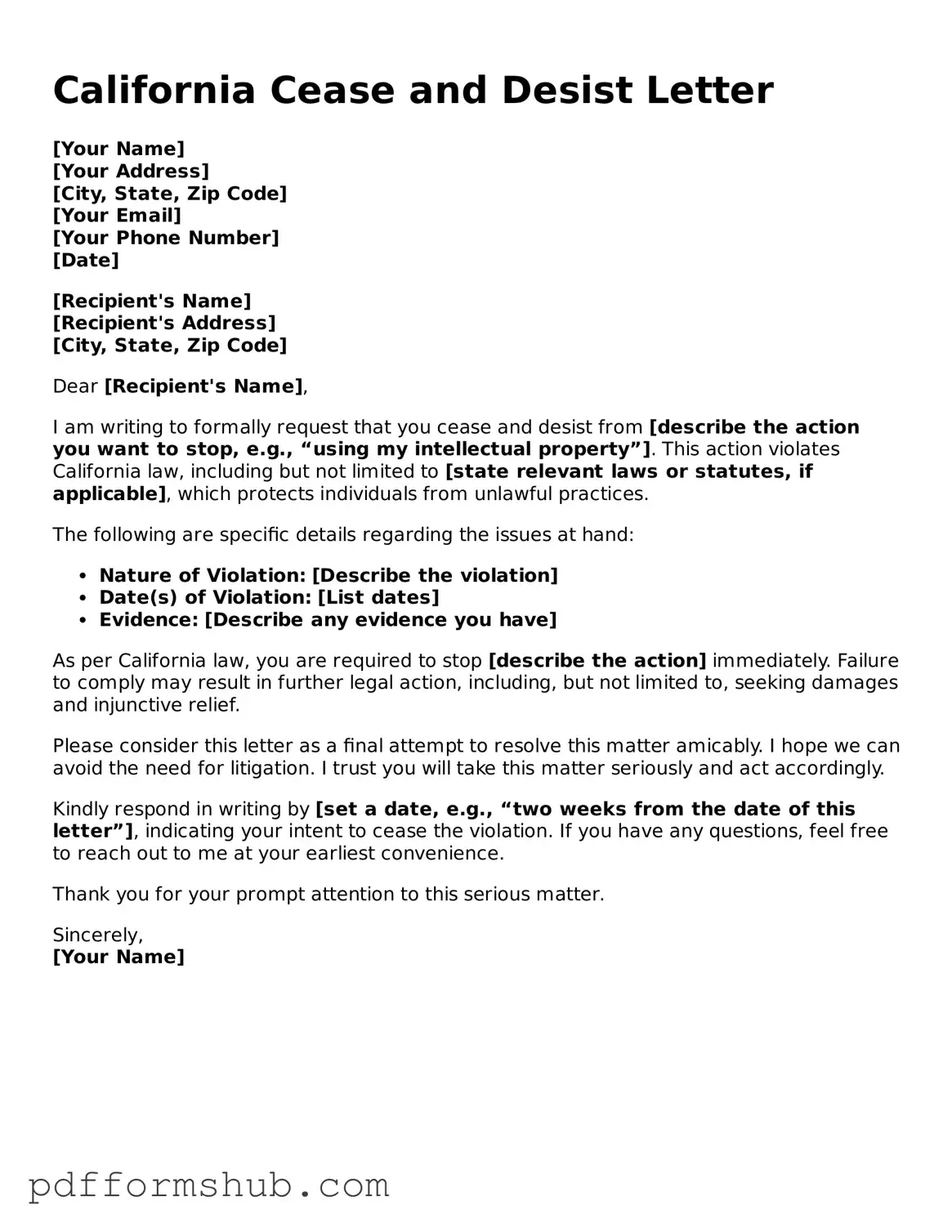Attorney-Verified Cease and Desist Letter Form for California State
A California Cease and Desist Letter is a formal document used to request that an individual or organization stop certain actions that may be harmful or infringing upon one's rights. This letter serves as a warning and can often resolve disputes without the need for legal action. If you believe your rights are being violated, consider filling out the form by clicking the button below.
Customize Form
